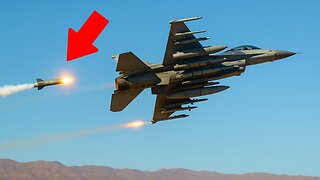Premium Only Content

Subsea Multiphase Flow Assurance and Flow Pattern Maps Online Course
Pipeline–riser transportation systems are frequently used in the offshore oil industry and are the main approach to transport oil and gas from oil wells to offshore platforms. In general, a pipeline–riser system has two key components: the sinuous pipelines on the seabed covering about 10 km from the wellhead to the pipeline manifold, and the risers connecting the manifold to the processing equipment on the platform and having various configurations according to the depth of the sea. From the point of view of flow assurance, the production fluid in a pipeline–riser transportation system must be operated in a safe, efficient, and reliable way throughout the design life of the platform. However, during the exploitation process, oil and gas multiphase mixtures transported in the system have various flow patterns that are more complicated than the flow patterns of multiphase flows in the horizontal or the vertical pipes. Some of the flow patterns may lead to equipment damage or reduction in oil production. Therefore, the flow patterns in oil transmission systems must be carefully controlled to ensure production safety.
The most important tasks are to identify the flow patterns to be avoided and to determine their flow mechanisms. Such a flow pattern is commonly known as severe slugging flow. It is observed to occur only at low flow rates as well as in the downward inclined pipelines, where it fosters the formation of stratified flow. In this situation, the gas from the well will be easily blocked in the pipeline and prevented from entering the riser, while the liquid accumulates at the riser base until the liquid level reaches the riser top. The trapped gas then pushes the liquid slug out of the pipeline and penetrates the riser once it reaches the riser base. The nature of the severe slugging process is unique, with extreme long liquid slug ranging from one to several riser heights and large pressure fluctuations in the pipelines together with long periods of intermittent liquid and gas production. It presents a challenge not only to the capacity of the separator processing the long liquid slug but also to the impact resistance of the facilities. As a result, severe slugging flow differs from normal slug flow and is expected to be clearly distinguished from other flow patterns.
For full videos you can visit this link :
https://drive.google.com/file/d/1bV2qkcvDcGgrY6aUw30E5eki4xRftvVx/view?usp=sharing
and you will be directed to a google drive link where you can download all files of this course
https://drive.google.com/file/d/1_o6MFjxS7YnLY37wZlcXhkWC-8eJ76UG/view?usp=sharing
-
 UPCOMING
UPCOMING
Man in America
7 hours agoHow Epstein Blackmail & FBI Cover-Ups Are Fracturing MAGA w/ Ivan Raiklin
4.11K1 -
 LIVE
LIVE
Inverted World Live
3 hours agoSolar Storms Ground 1000 Planes | Ep. 151
7,924 watching -
 2:54:08
2:54:08
TimcastIRL
3 hours agoJ6 Pipe Bomb Suspect ARRESTED, Worked With BLM, Aided Illegal Immigrants | Timcast IRL
188K90 -
 LIVE
LIVE
Alex Zedra
1 hour agoLIVE! Bo7 Warzone
618 watching -
 LIVE
LIVE
Drew Hernandez
20 hours agoCANDACE OWENS / TPUSA STALEMATE & DC PIPE BOMBER CAPTURED?!
890 watching -
 12:31
12:31
Robbi On The Record
4 hours ago $0.23 earnedWhy Nothing Feels Real Anymore | The Science, Culture, and Spiritual War Behind the Fog
7.67K7 -
 18:42
18:42
Navy Media
4 hours agoHouthis ATTACK the Wrong U.S. Fighter Jet – Then THIS Happened…
11.1K20 -
 40:24
40:24
MetatronGaming
1 day agoSomething is REALLY Wrong with this apartment...
5.75K2 -
 LIVE
LIVE
SpartakusLIVE
4 hours agoHUGE NEW UPDATE - Aim Assist NERF, New META, New MOVEMENT || #1 King of Content
313 watching -
![battlefield 6 with the crew! [RGMT CONTENT Mgr. | RGMT GL | GZW CL]](https://1a-1791.com/video/fwe2/7f/s8/6/w/D/y/F/wDyFz.0kob.18.jpg) 2:32:26
2:32:26
XDDX_HiTower
2 hours agobattlefield 6 with the crew! [RGMT CONTENT Mgr. | RGMT GL | GZW CL]
9.21K